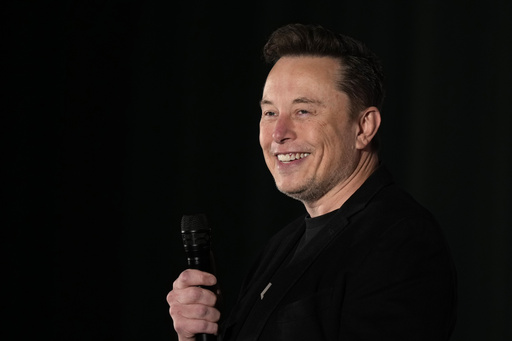
WASHINGTON — A super PAC linked to Elon Musk reportedly spent approximately $200 million to assist in the election of Donald Trump, marking a significant shift in how billionaires can sway the electoral process. This financial backing primarily came from Musk, the CEO of Tesla and SpaceX, and was directed toward America PAC, which aimed to engage both low-propensity voters and first-time voters, according to an individual familiar with the PAC’s expenditures who requested anonymity due to the sensitive nature of the information.
America PAC’s initiatives were bolstered by a March decision from the Federal Election Commission, which authorized super PACs to work closely with campaigns on their outreach strategies. This development enabled Trump’s campaign to utilize the vast financial resources of prominent billionaires like Musk to enhance voter turnout in conservative regions. Consequently, the campaign could allocate its funds toward various objectives, including extensive national advertising and direct outreach to demographics previously dominated by Democrats.
The strategy proved effective for Trump, who experienced notable turnout increases in crucial battleground states. After the election, he acknowledged Musk’s influential role, declaring at his election night gathering, “We have a new star. A star is born — Elon!”
James Blair, serving as the political director for the Trump campaign, commented that the FEC’s ruling enabled campaigns to capitalize on additional “soft money” that was already being utilized for voter outreach. His role as the primary link between Trump’s campaign and outside groups like America PAC stands in stark contrast to the earlier days when super PACs had to develop their methods without collaborating with the campaigns they supported.
Blair noted that saving funds on direct campaign contributions allowed for broader and deeper engagement through paid contact with voters, encompassing wide-reaching ad campaigns alongside targeted initiatives aimed at increasing support among Black and Latino men, demographics where Trump had made significant strides in 2024.
In addition to Musk’s financial support, his status as a high-profile surrogate for Trump in the campaign’s final months also contributed significantly. Musk frequently appeared alongside Trump, helping the former president connect with younger male voters who admire him. Furthermore, Musk’s ownership of X, formerly known as Twitter, played a role in bolstering Trump’s visibility by endorsing changes to the platform that previously restricted Trump’s activity. Musk has often criticized social media efforts to combat misinformation, viewing them as governmental censorship.
Looking ahead, Musk is anticipated to hold an influential position in a potential second Trump administration. The president-elect has mentioned plans to appoint Musk, whose aerospace company collaborates with the Defense Department, to lead a new commission focused on enhancing government efficiency.
The collaboration between Trump’s campaign and America PAC may have profound implications for future presidential elections. It could lead to a fundamental change in campaign operations, challenging established beliefs about the limitations of campaign control over outreach efforts and highlighting the significant impact that billionaire financial backing can have in politics.
Yet, there is skepticism regarding this approach due to past failures of similar models, notably Ron DeSantis’ campaign during the 2024 Republican primary against Trump. DeSantis relied heavily on the external group Never Back Down, which faced internal turmoil and, despite a $130 million budget, was overshadowed by Trump’s campaign efforts in Iowa. One key concern for DeSantis’ team was the legal gray area surrounding communication between campaigns and affiliate groups, a challenge that existed before the FEC’s ruling altered the operational landscape.
Following the FEC ruling, Blair highlighted that it permitted a more direct and streamlined communication process surrounding canvassing strategies, yielding a crucial difference in the campaign dynamics. Although Musk’s group assembled in May, its voter outreach initiative gained momentum after Musk endorsed Trump in July, shortly after an assassination attempt against the former president.
America PAC engaged in various promotional activities, including advertising campaigns warning voters that abstaining from the election could lead to negative outcomes. Notably, the group introduced a $1 million-a-day voter sweepstakes, which faced legal scrutiny but was ultimately allowed to proceed. However, much of America PAC’s engagement occurred with minimal public attention.
The effectiveness of America PAC was perhaps most evident in their door-to-door canvassing, where Trump benefitted from increased voter turnout in vital rural battleground regions. However, this effort was not without its controversies. Reports indicated that several paid canvassers falsified their efforts, claiming to have visited doors they had not, and some faced harsh working conditions, raising questions about the overall integrity of the campaign’s outreach strategies. Following these allegations, America PAC faced legal challenges and public scrutiny.
A spokesperson for America PAC chose not to comment regarding these matters. In the meantime, Musk expressed intentions to continue his PAC’s involvement in the political arena, emphasizing preparations for upcoming midterm elections and various local judicial races.
